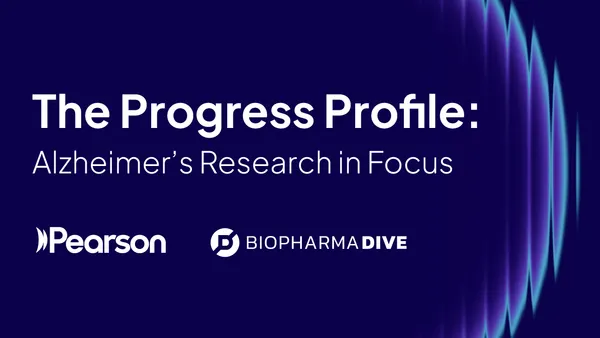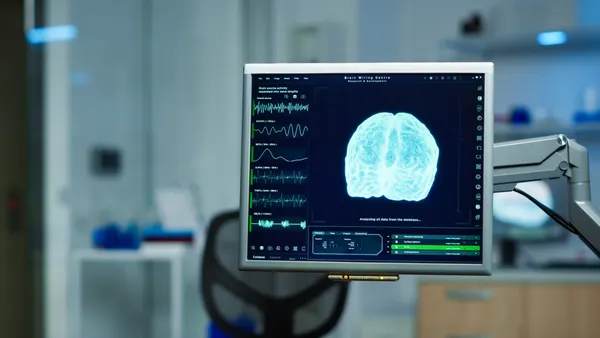It’s a patient-centric world. Patients today are active consumers, not passive recipients. They want to be a partner in your clinical trial. How can you make use of technology to meet their needs, help them feel engaged in your study, and ensure a more successful clinical trial?
The first article in this three-part series discussed the power and potential of mobile communications to enhance patient retention. The second article discussed how apps can help increase medication adherence. Today's installment addresses how educational components in apps can improve patient engagement.
People who join clinical trials typically are information-seekers. They want to take an active role in their health, they want to know more about their condition, and they want to know what the clinical trial is all about.
Providing enrolled patients with high quality educational content before, during and after their participation, can help sponsors to meet those needs, as well as to help patients feel more engaged in the study and follow the study protocol correctly. And that can mean fewer protocol deviations and fewer people dropping out of the study.
Developing and providing content that patients find interesting and engaging, however, is not always easy. The experts at Bracket offer some guidelines for including educational content in study-specific mobile apps for patients.
Educational Content Means Many Things
Today, clinical trial educational content goes far beyond the standard consent form.
Study sponsors can (and should) provide patients with many types of information, including study aims and timelines, potential side effects of the therapy under study, guidance on how to comply with the protocol and how to store and administer the medication, background on the therapy being studied, and earlier research results.
Many sponsors also go beyond study-specific information, providing disease backgrounders, thoughts on potential future applications of the therapy, and supportive online communities for patients during and after the clinical trial.
Paper handouts are no longer sufficient for delivering such educational information to patients. A study-specific mobile app provides a centralized way to deliver most or all of that content in a way that is familiar and friendly for patients. Typically, a study app will provide a limited amount of basic information early in the study, but will have additional information available in a content library that can be accessed as a patient’s needs change.
Media Consumption: One Size Does Not Fit All
Many people have strong preferences for how they consume content. Some like to read documents, while others prefer illustrations, brief videos or text messages. Some like infographics, others prefer animations or podcasts. In addition, some people will want to explore all the information they can about a study right away, while others might like to take in small bits of information over time, as the study progresses.
"One size does not fit all," says Denis Curtin, principal at Bracket. Whenever possible, he advises, give patients the option to choose how they want to consume study content.
"There is no blanket application that works for all patients," agrees Mindy Gruba, lead, new product development at Bracket. "Patient populations are so diverse and their preferences vary by demographics, their health condition, their propensity for using technology, and many other factors. Teenagers, for example, tend to prefer lots of images. In contrast, adults might be more accustomed to reading text, but those who have trouble reading small type might find instructional videos easier to follow."
Another consideration is how much people really want to know. Study sponsors shouldn't force information on anyone. "People who have a greater sense of self-efficacy—the perception that they can overcome their issue—may be more likely to seek information," says Gruba. Others might prefer to limit their knowledge of the disease.
As an example, Gruba cites a group of parents with whom her team worked; their children all had a terminal illness. "In a focus group, we asked the parents if they wanted to learn more about the disease," she says. "They told us, 'I know my child's disease will progress no matter what I do. I don’t need to know more about the condition. I want to be educated on how I can make our lives easier.'"
"They wanted education not about the disease, but about how to cope with the disease," says Gruba.
Still others may appreciate their app or website dashboard to track in precise detail their own health markers and progress over the study timeline.
"None of us can presume to know what’s going to be best for patients with a given disease, in a given study," adds Curtin. "So if you can, ask them what they want. We’ve done focus groups with as few as ten people, and as many as thousands via a Facebook group. We really try to learn what they need, what’s affecting them day by day, how we can help, what services they need, and what would enable them to be more successful in managing their disease."
The more you learn about the patients in your study, the better equipped you’ll be to deliver the right amount of information in a way they want to consume it.
Avoid Information Overload
Ignorance isn’t bliss, especially in regard to health, so it’s imperative to provide more of the right kinds of information than ever before. Modern tools make open communication easy, though you need a clear content sharing strategy to avoid overwhelming patients in your trial.
"Keep it simple," advises Gruba. "Information overload is a huge issue. Patients are already dealing with how to take their medication, how to keep up with the study requirements and more. Identify the most important things the patient needs to know, and really focus on those."
And make sure the content is easily understandable. "In the medical field, there are a lot of big words that go right over people’s heads," says Gruba. Indeed, studies have shown that only 12%i of U.S. adults have adequate health literacy, or the "capacity to obtain, process, and understand basic health information and services they need to make appropriate health decisions."ii
Develop content that will meet the needs of people with varying degrees of health literacy, she suggests. "Write the content so it is conversational and straightforward, readable, and in plain language. Deliver the content in a way that is easily digestible, not only in how it’s written, but also in how it’s presented visually." (For guidance on how to make content more understandable, see www.plainlanguage.gov.)
Assess Patient Understanding Regularly
Don’t assume that patients using your study’s app are retaining all of the information you give them. Assess their understanding regularly throughout the clinical trial.
"We know that even though information seeking is high, retention can actually be pretty low, because people become so overwhelmed,"iii says Gruba.
Assessment tools can be built into the educational components. For example, a patient might be required to keep an app-based study diary in which they regularly answer questions about their symptoms or the medication they are taking. If their answers indicate they are not increasing their understanding of important issues as the trial progresses, the app can direct the patient to specific educational material. Or, the app might alert a clinical trial staff person to follow up with the patient to offer some one-on-one coaching.
Good Content Engages and Retains Patients
Help your patients to understand relevant issues, and they will be less likely to have problems following the study protocol.
One study of patients using the Bracket Patient Engagement mobile app, for example, found that those who received informative text message reminders about medications and site visits experienced an 85% reduced risk of drug interruptions. Additionally, 250% fewer patients in the app-using group withdrew from the study. In another study, patients who received instructional dosing videos, medication reminders, and other helpful content had 91% fewer protocol deviations.
Clearly, helping patients to feel engaged and educated when they are enrolled in a clinical trial helps them and helps a study sponsor’s bottom line. But it’s important to take the time to develop an effective solution for your patients.
"The more information you can gather about the patients who are going to be part of your program, the more market research you can do, the better your app design will be," says Curtin.
Create your own user feedback survey
i Kirsch IS, Jungeblut A, Jenkins L, Kolstad A. 1993. Adult Literacy in America: A First Look at the Results of the National Adult Literacy Survey (NALS). Washington, DC: National Center for Education Statistics, U.S. Department of Education.
ii U.S. Department of Health and Human Services. 2000. Healthy People 2010. Washington, DC: U.S. Government Printing Office. Originally developed for Ratzan SC, Parker RM. 2000. Introduction. In National Library of Medicine Current Bibliographies in Medicine: Health Literacy. Selden CR, Zorn M, Ratzan SC, Parker RM, Editors. NLM Pub. No. CBM 2000-1. Bethesda, MD: National Institutes of Health, U.S. Department of Health and Human Services.
iii Turner, M. M., Rimal, R. N., Morrison, D. and Kim, H. (2006), The Role of Anxiety in Seeking and Retaining Risk Information: Testing the Risk Perception Attitude Framework in Two Studies. Human Communication Research, 32: 130-156.









